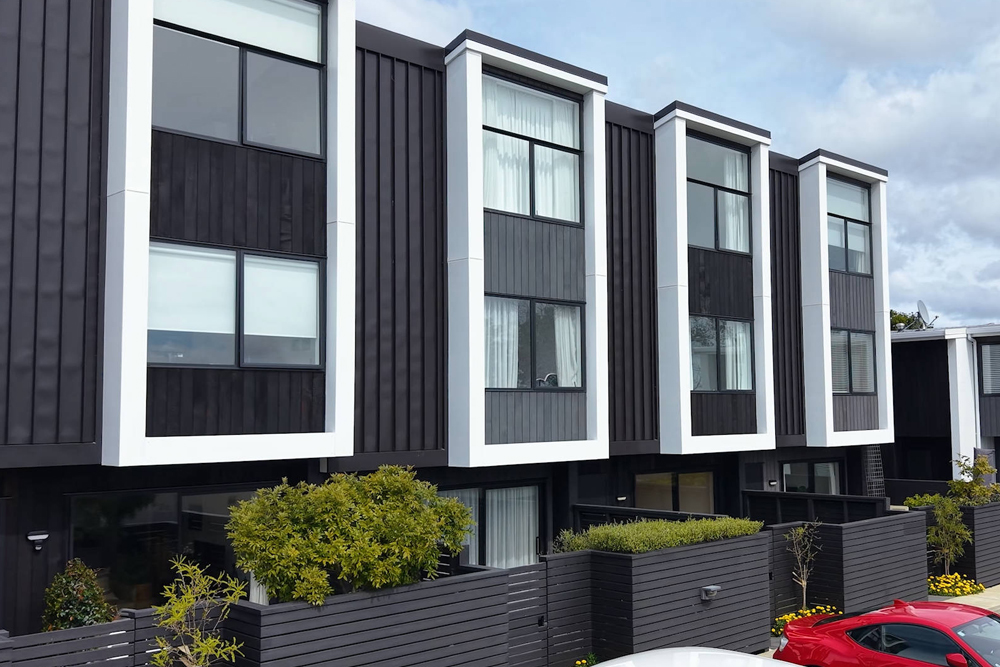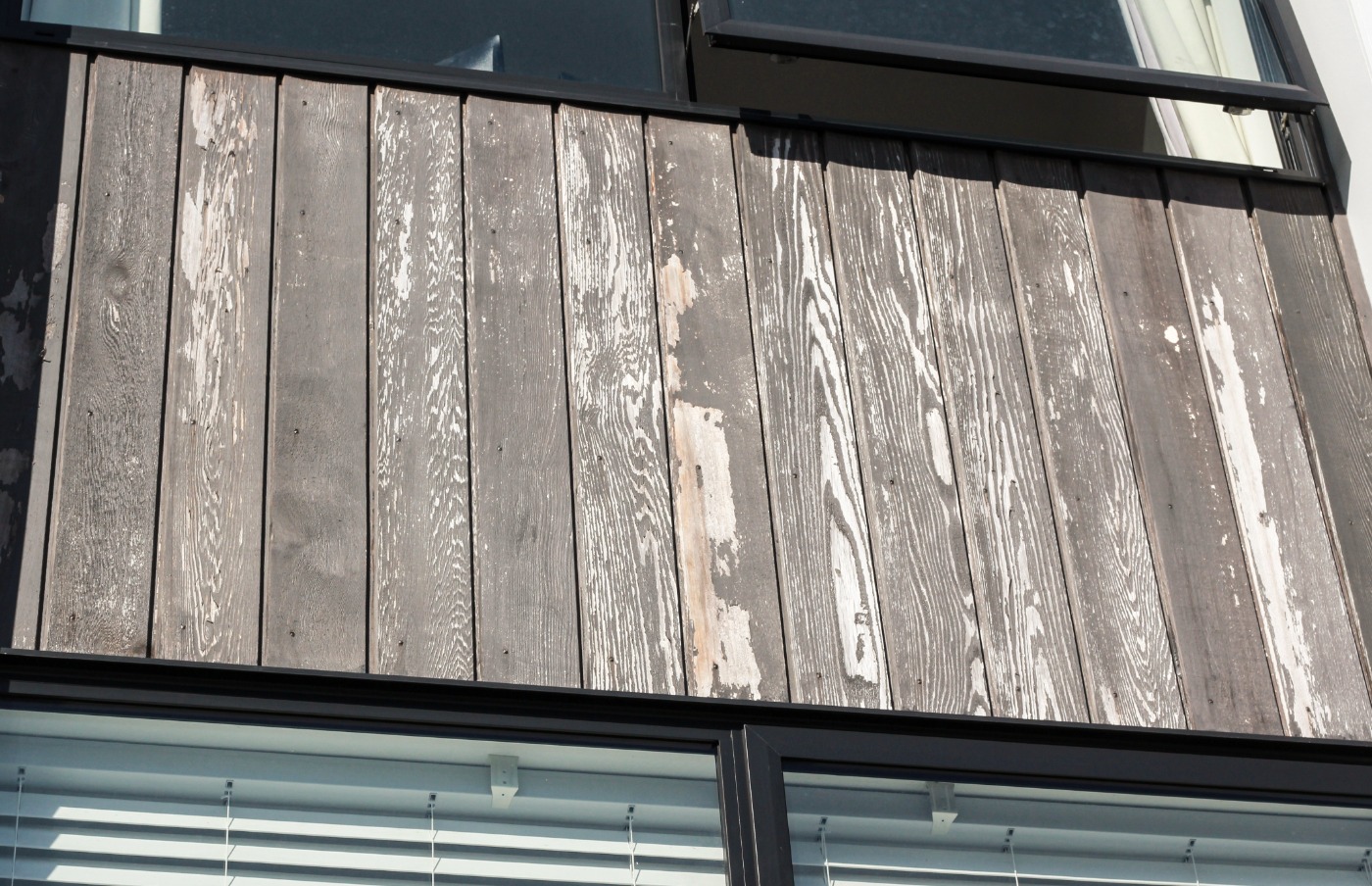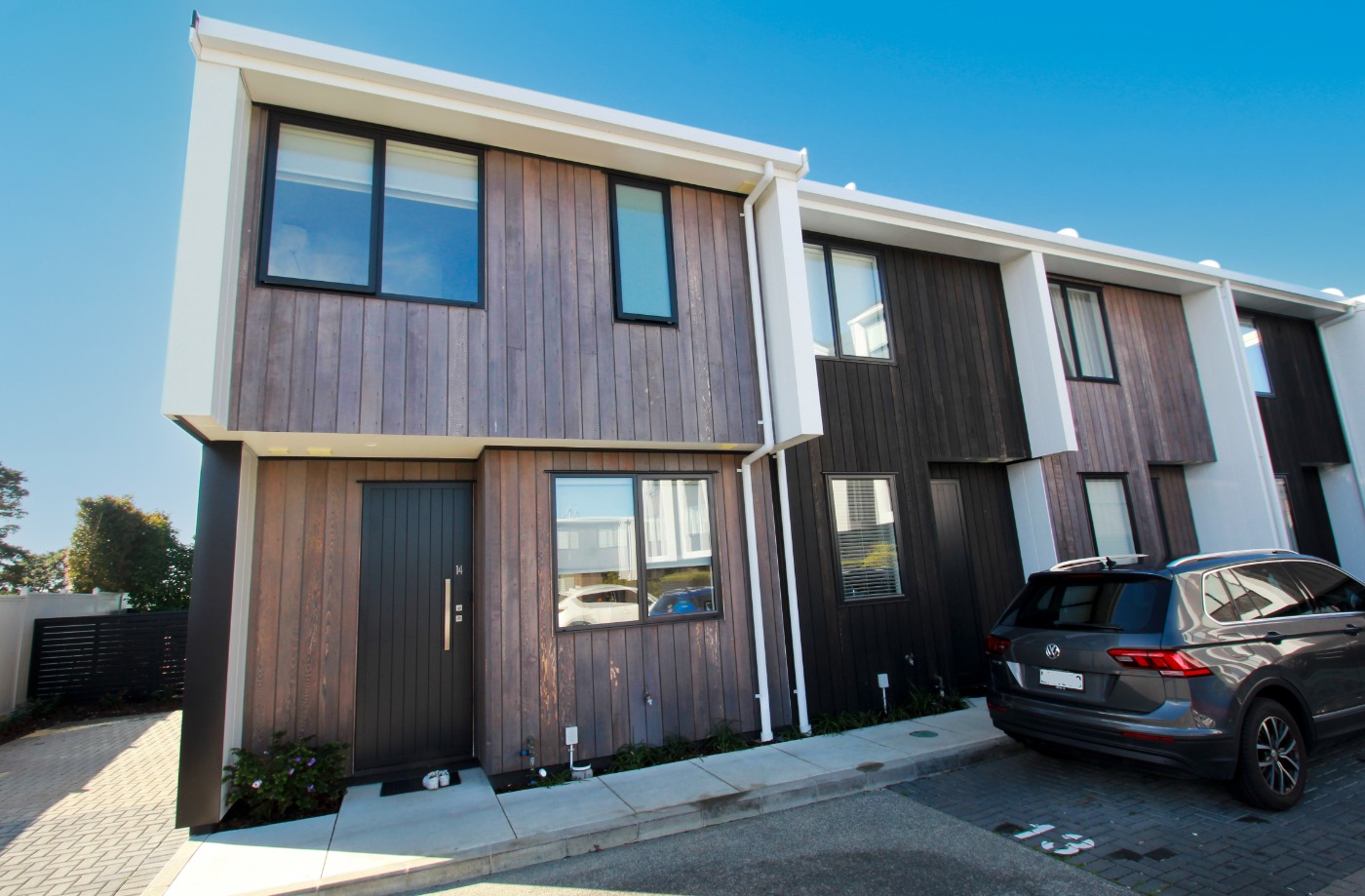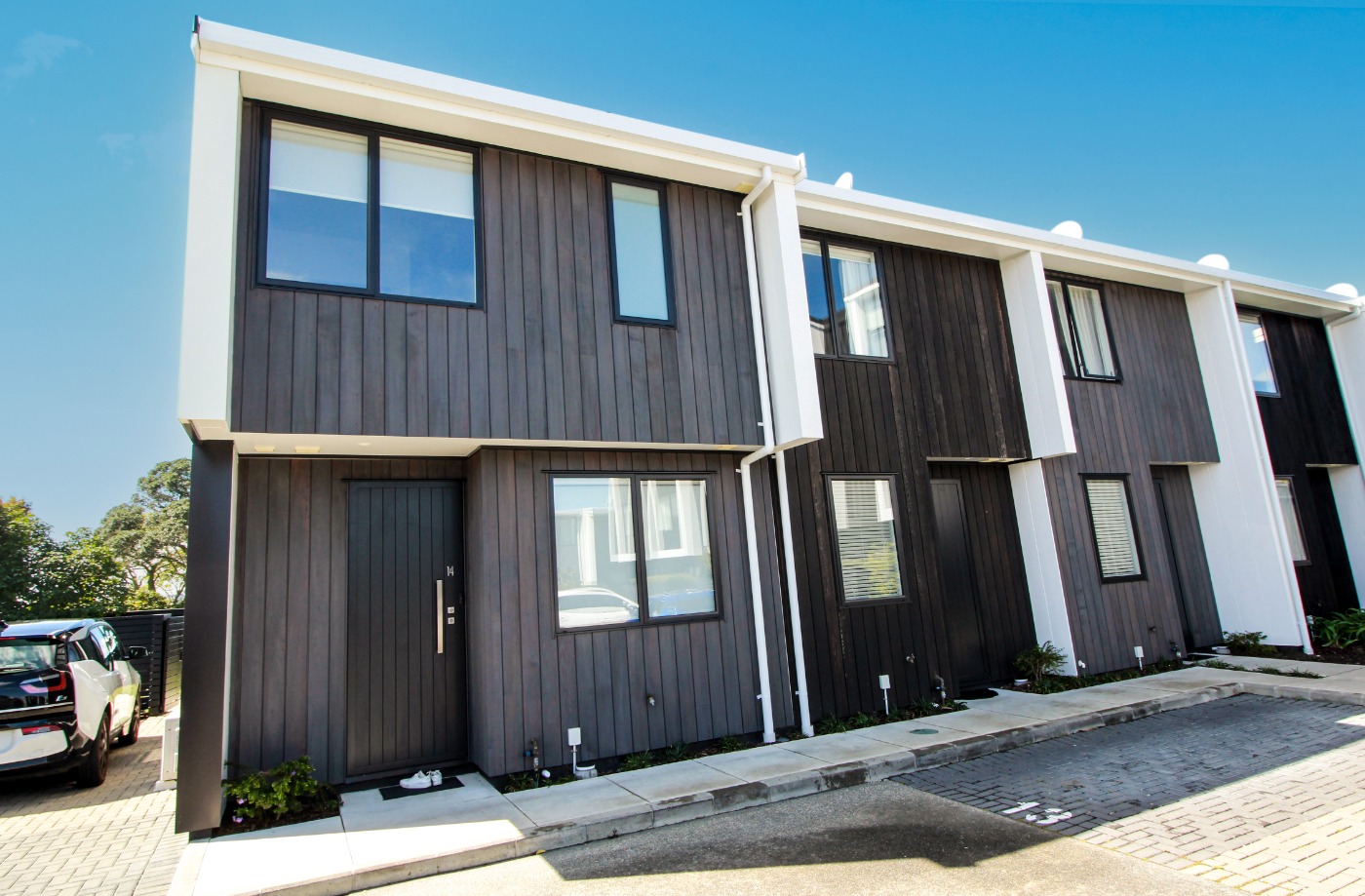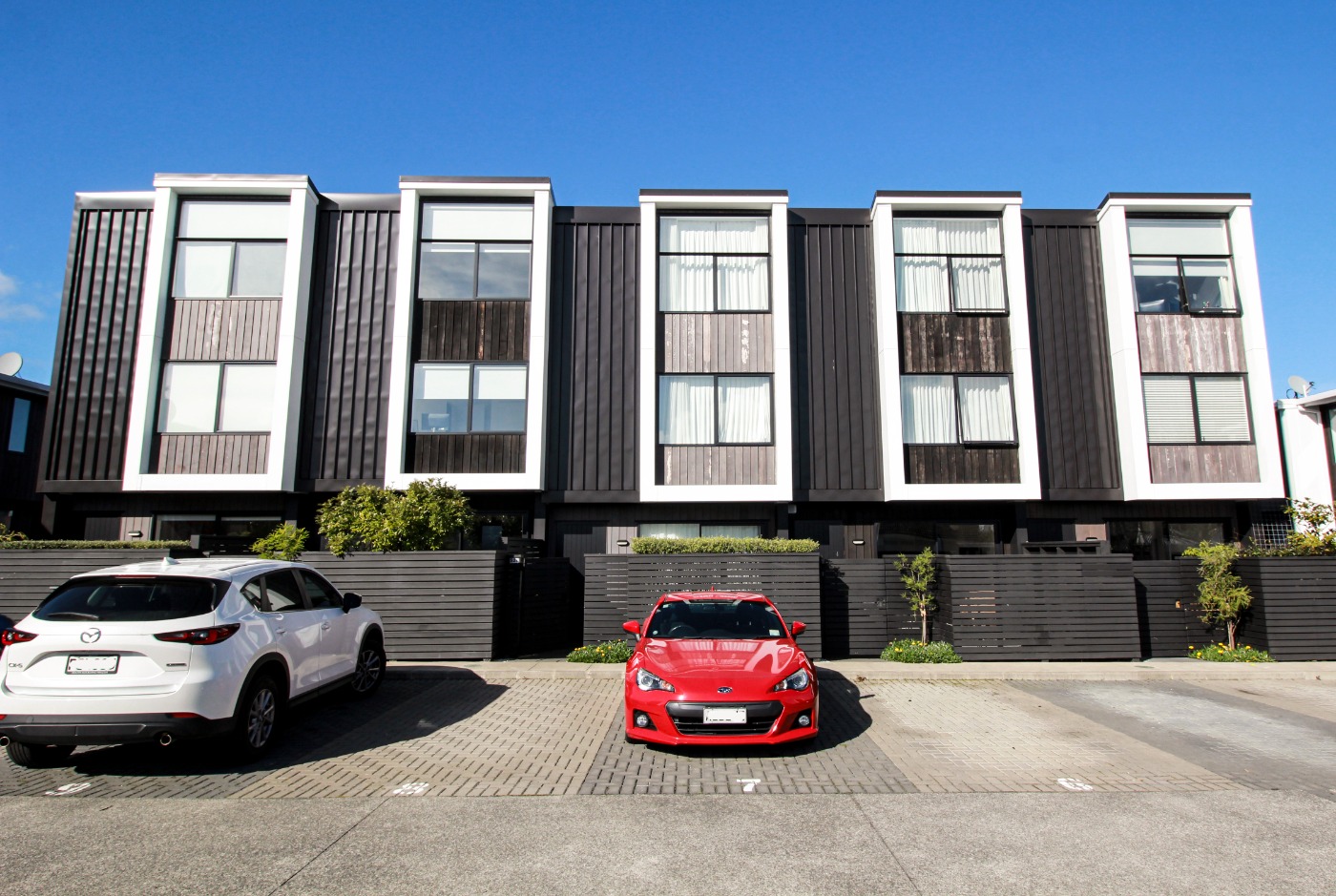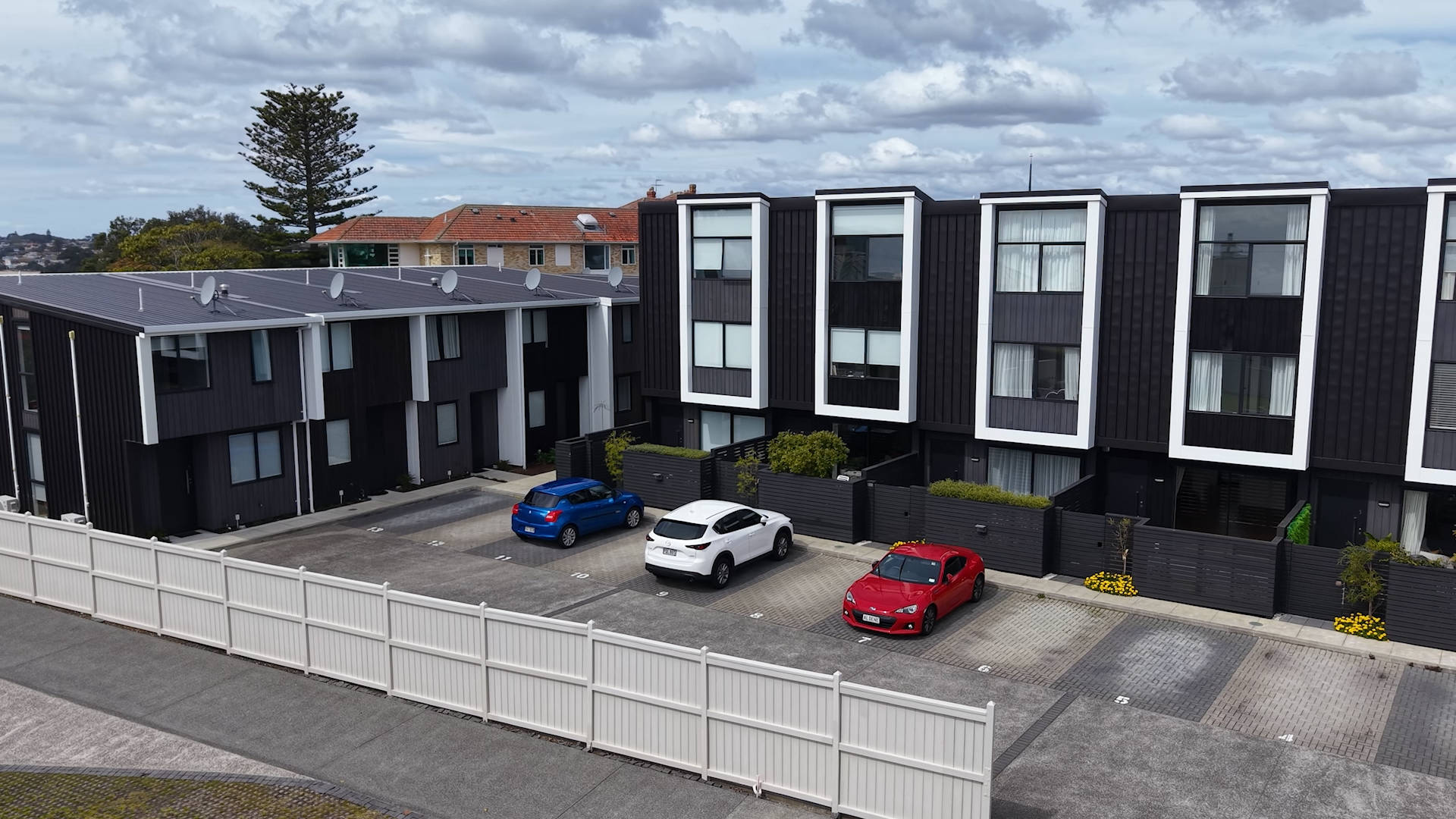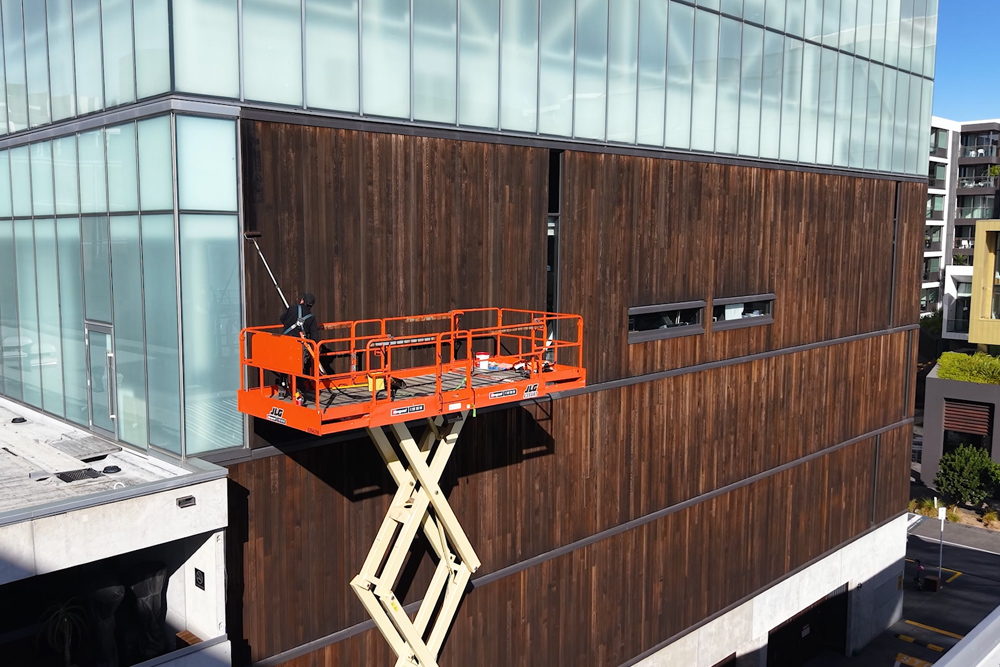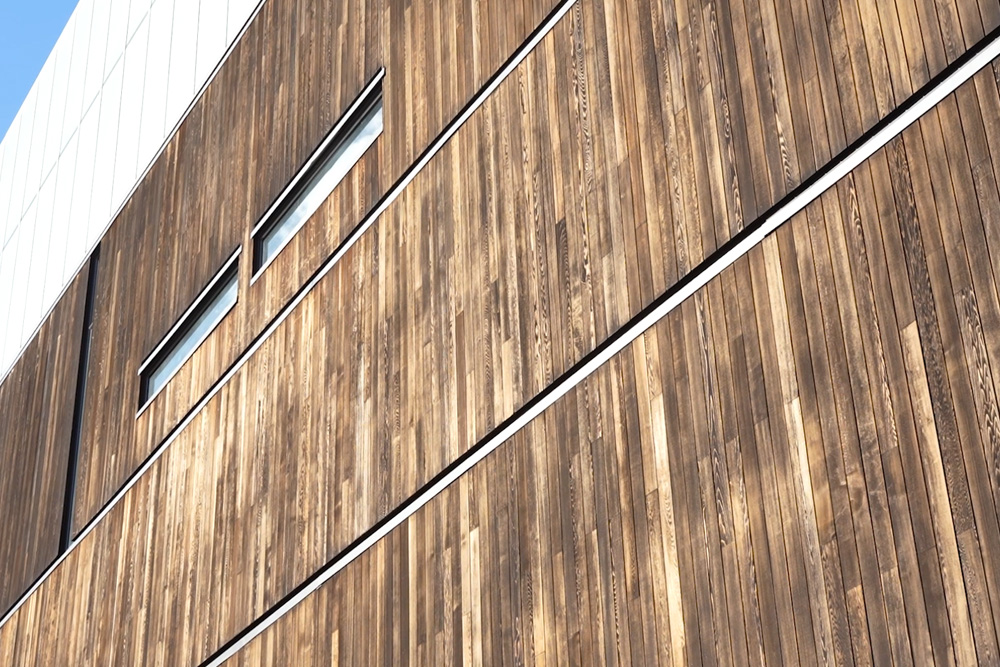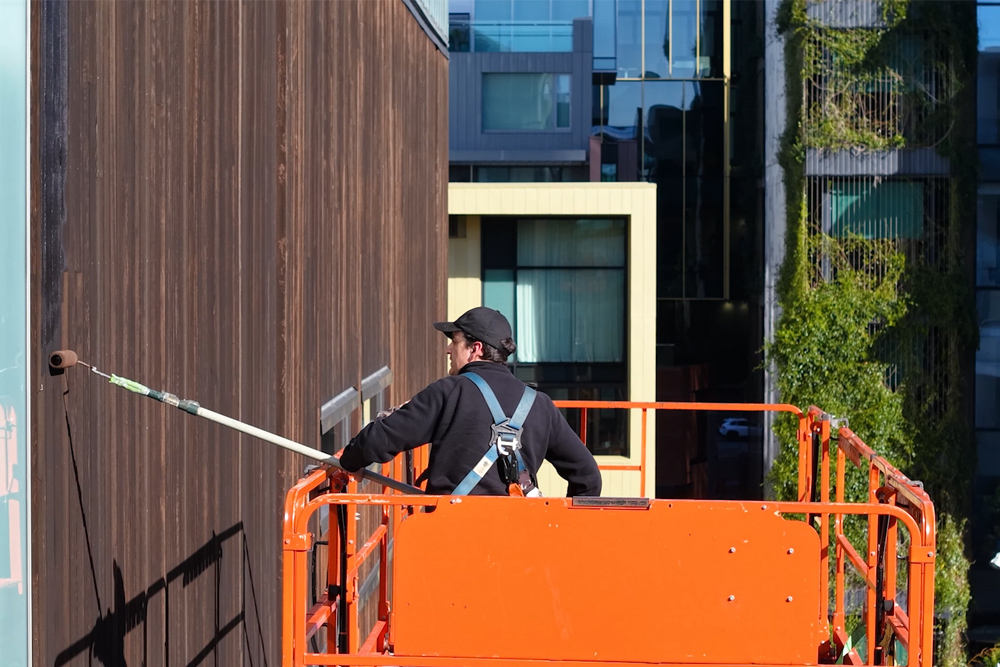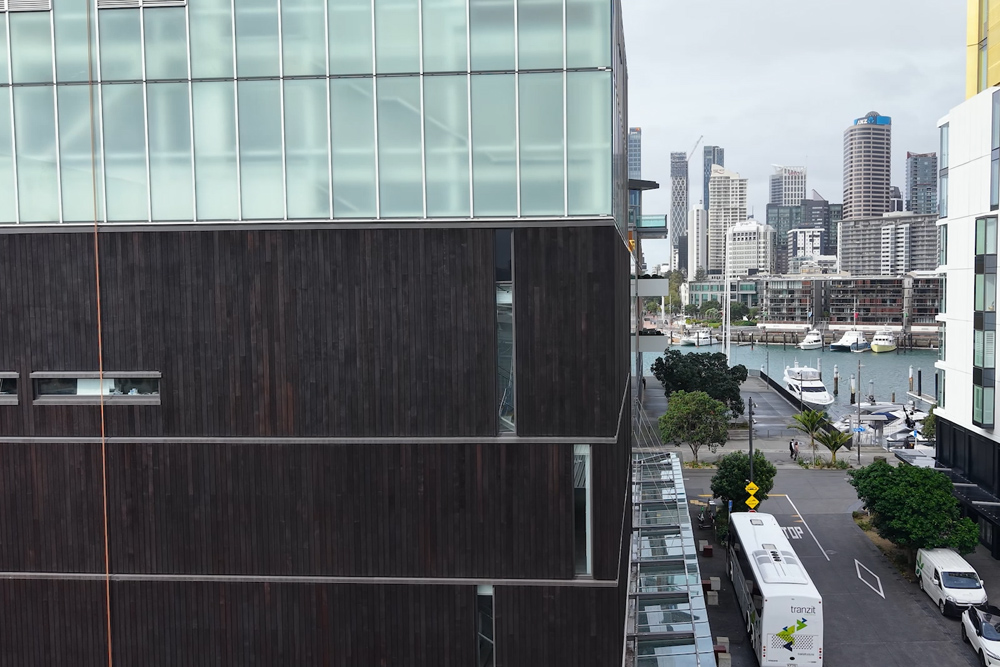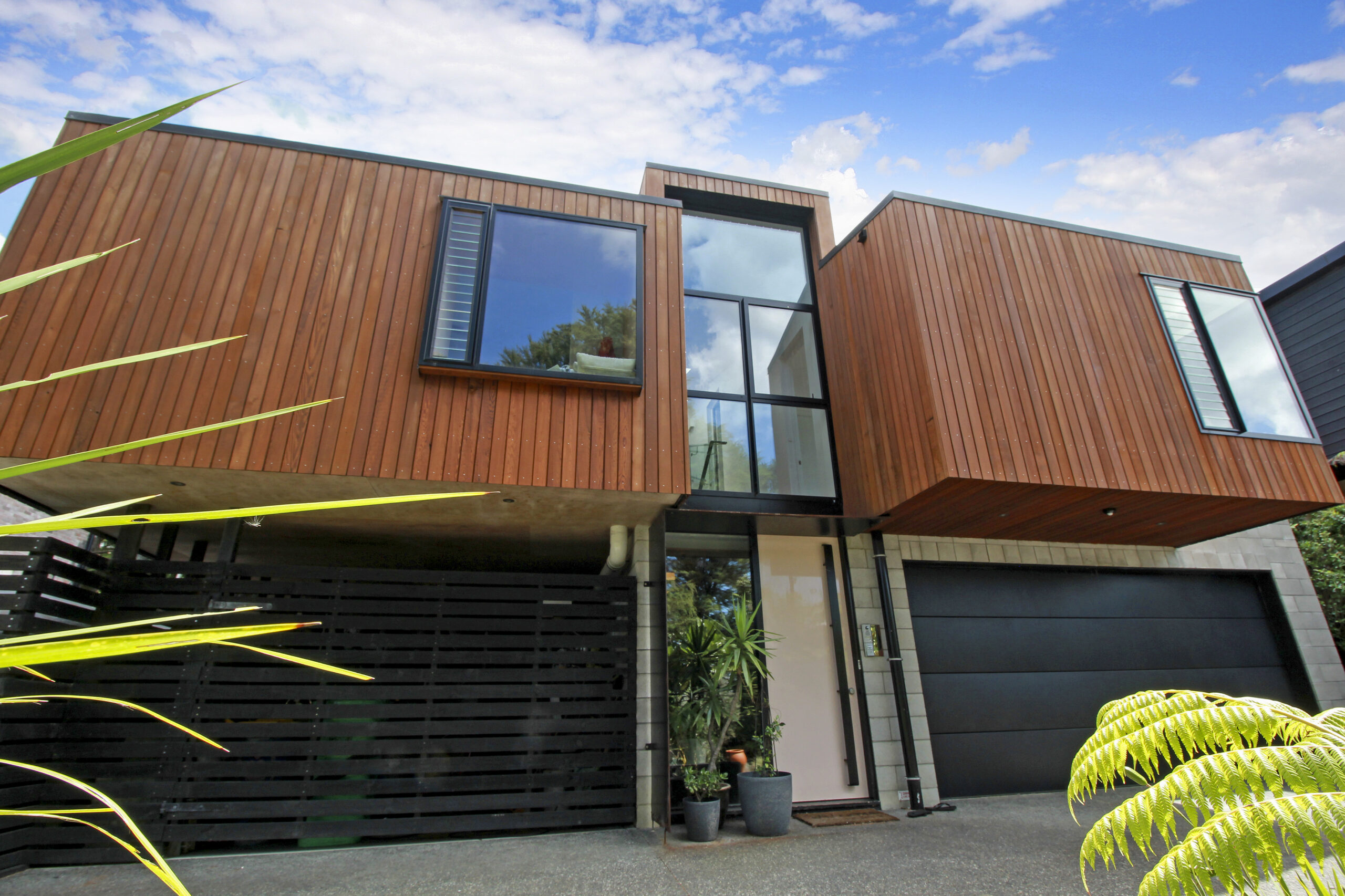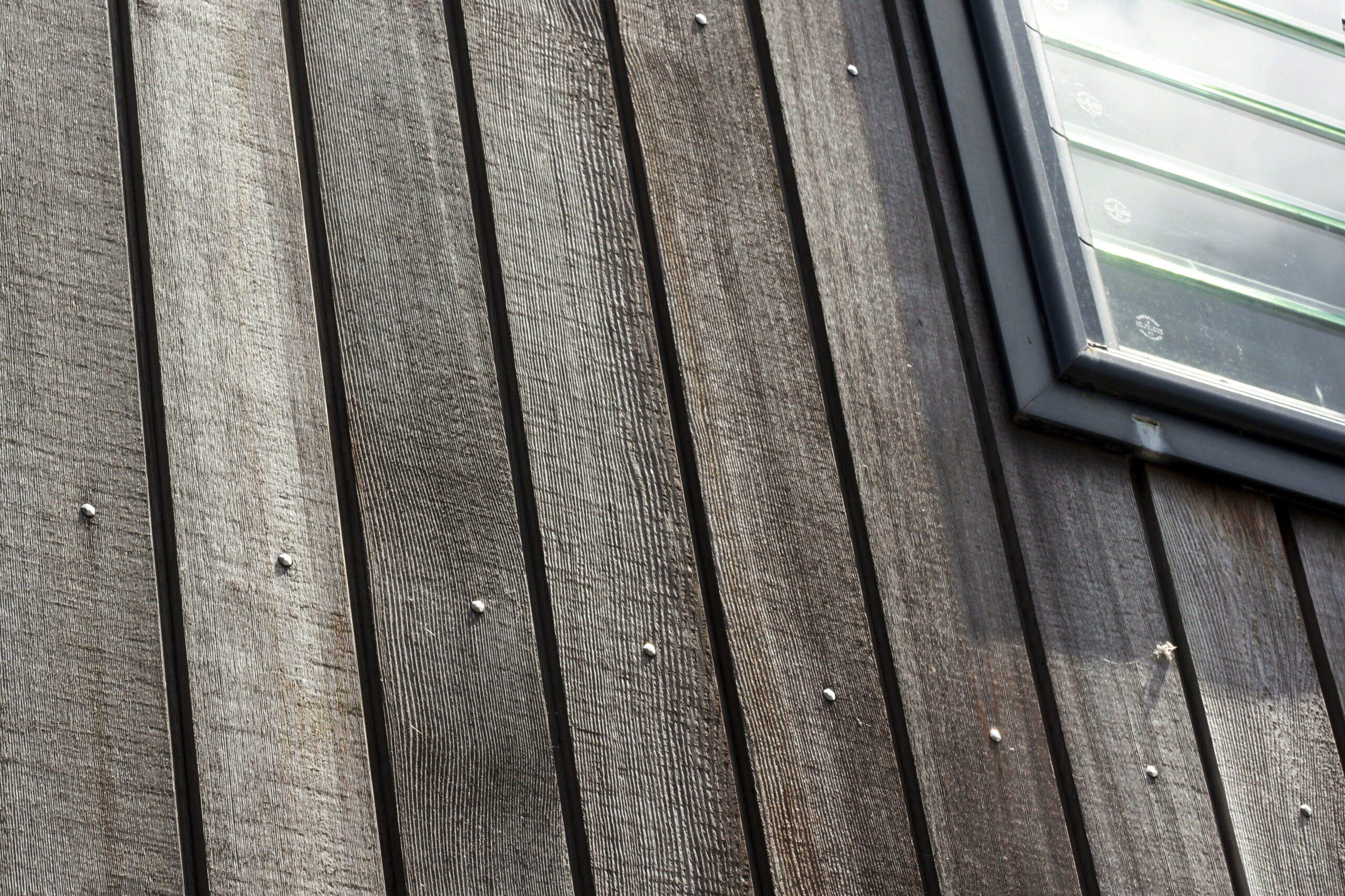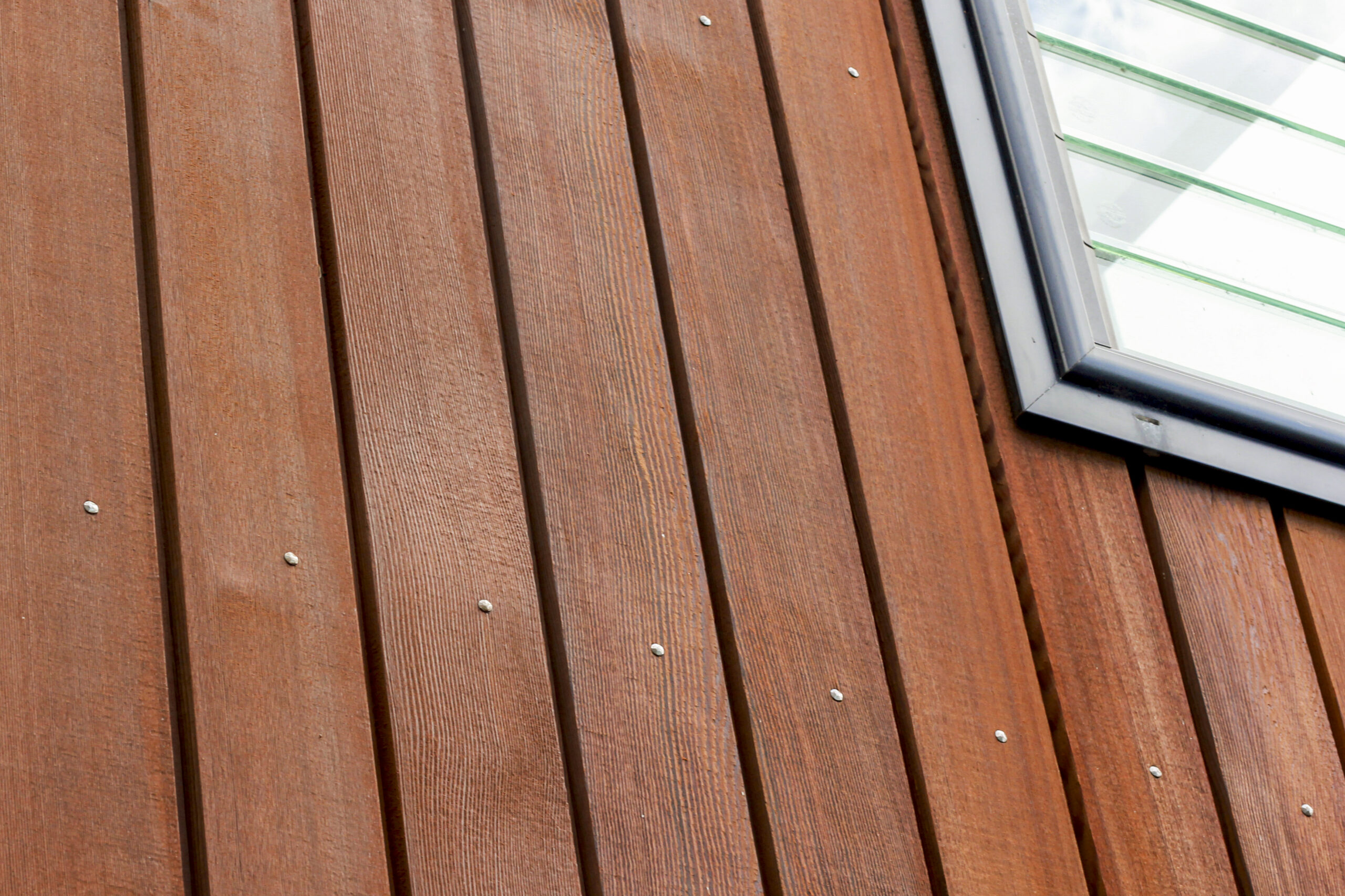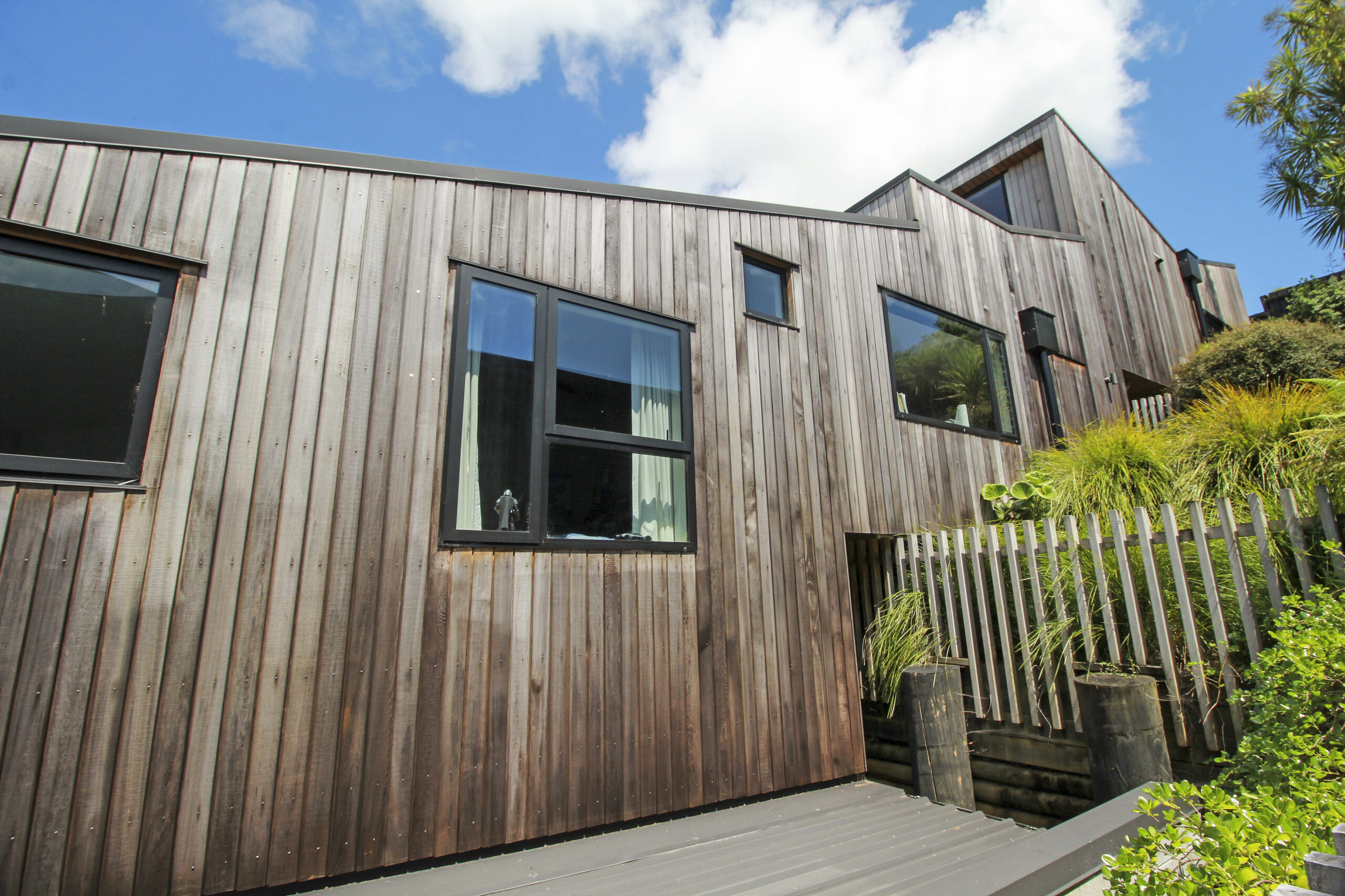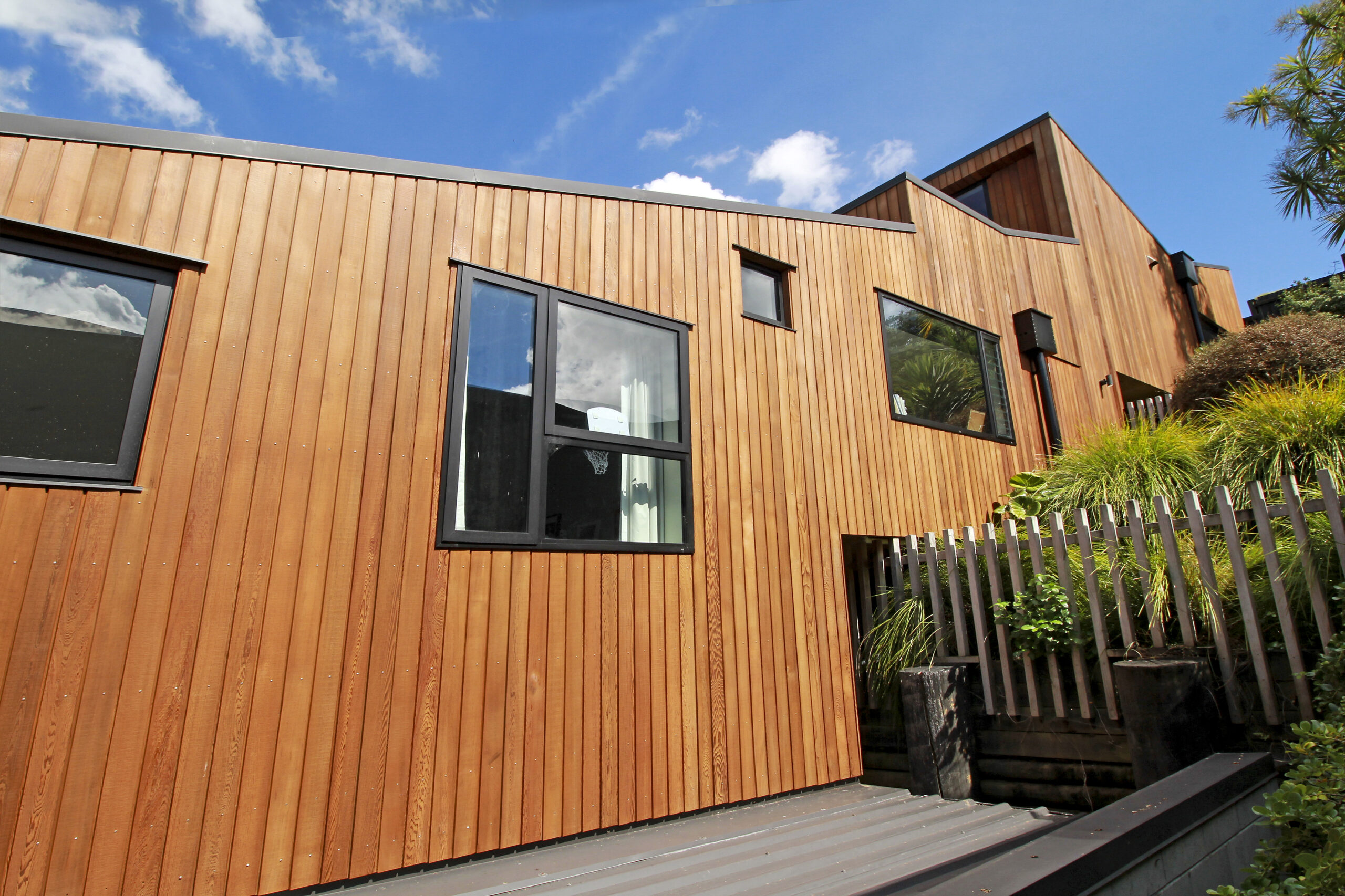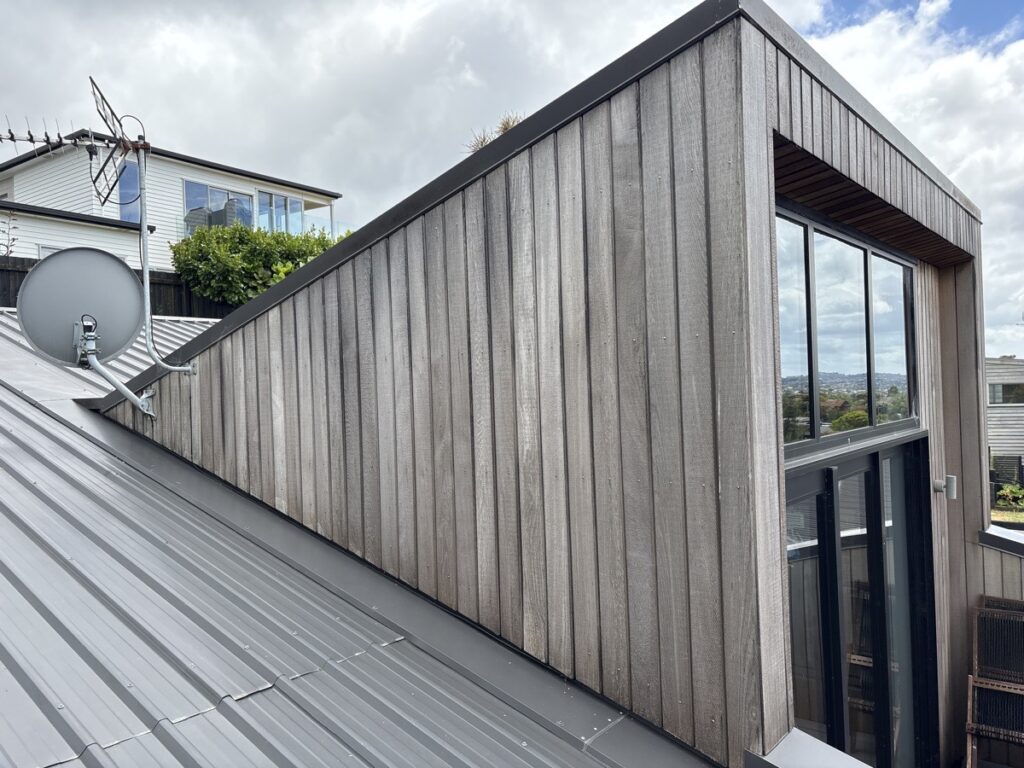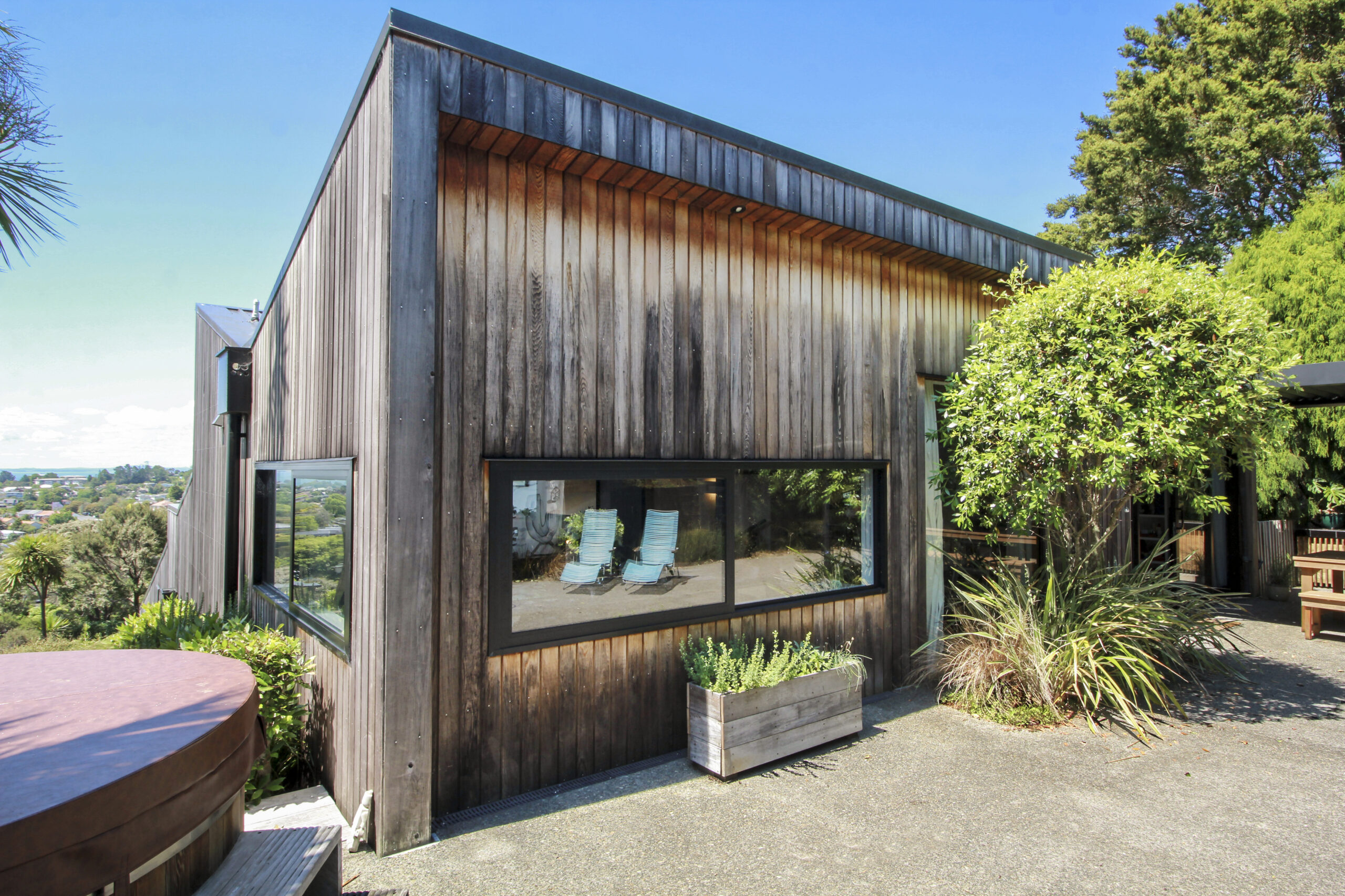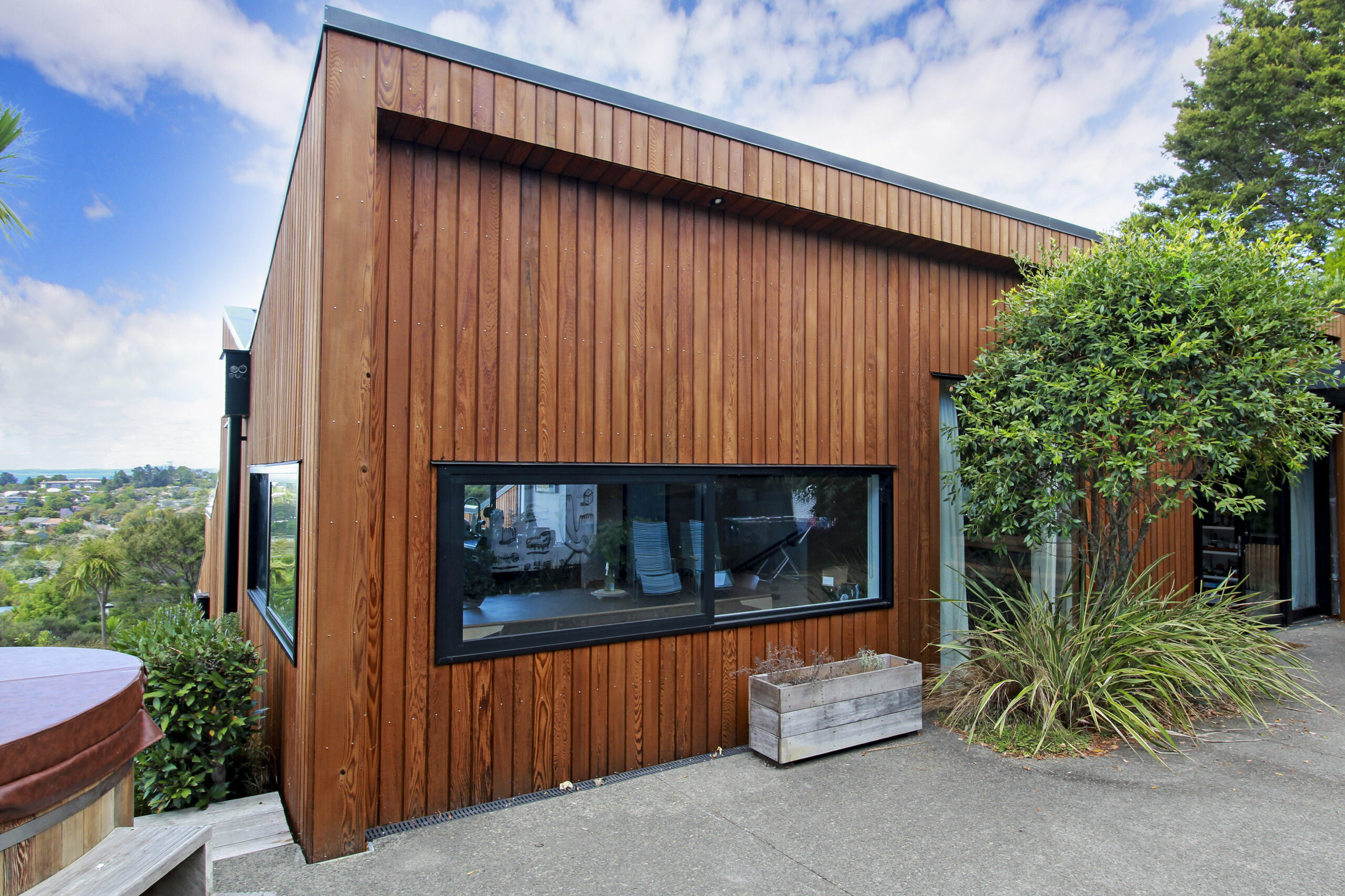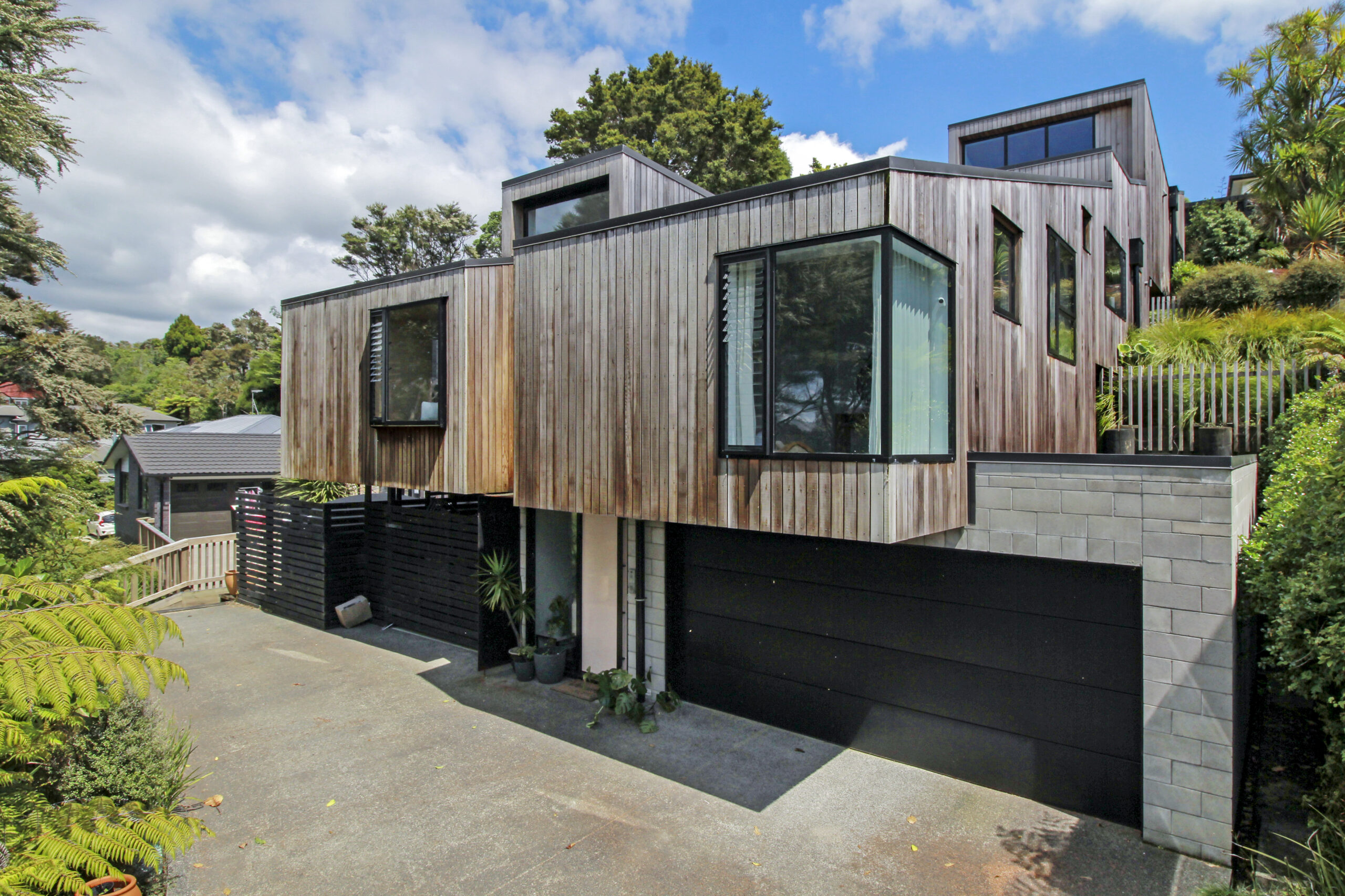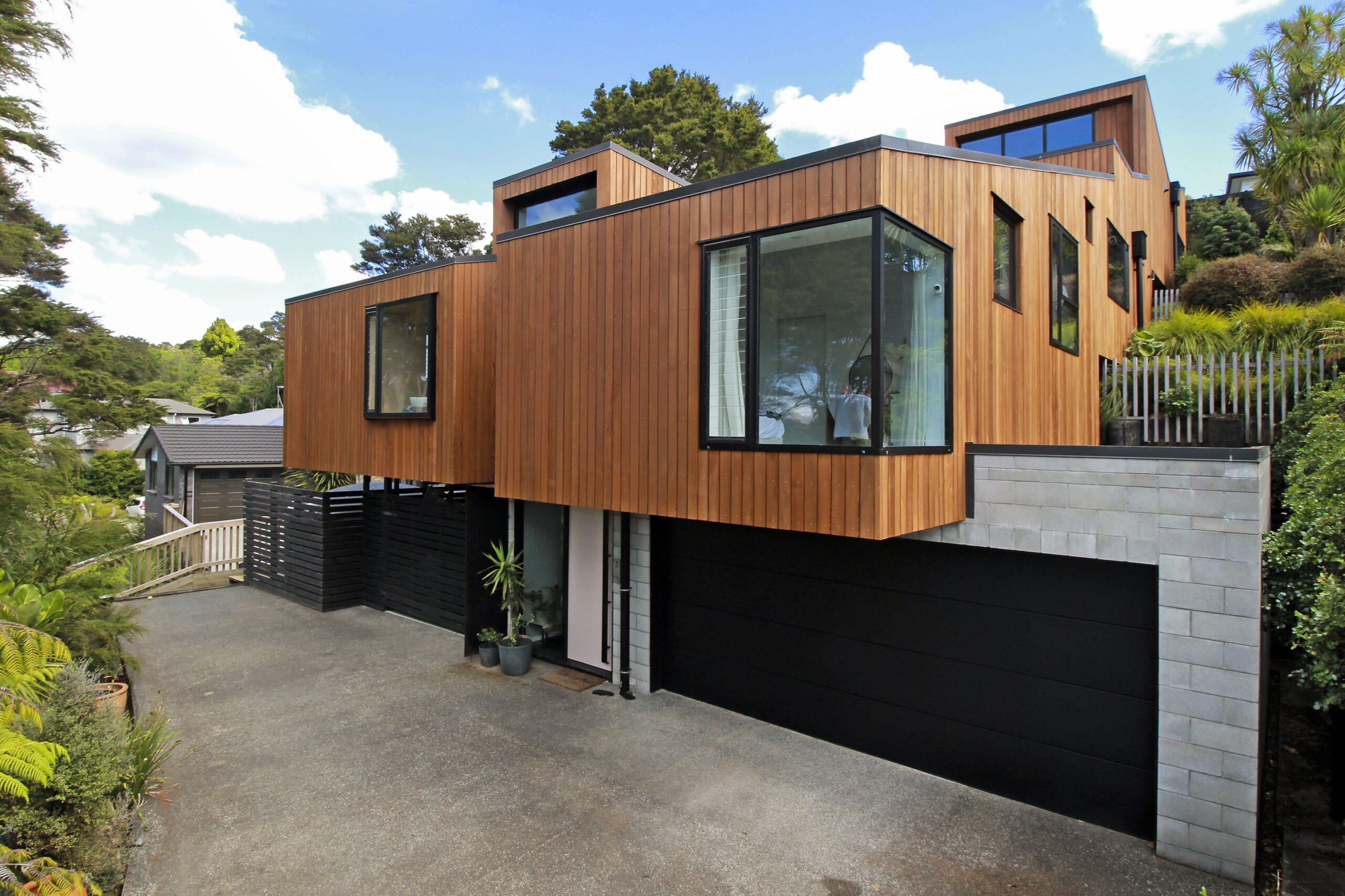This modern, 2-story home is located in the leafy suburb of Titirangi, a beautiful area far from the bustle of the city, but which also has a lot of tree cover and higher than average rainfall, creating the perfect environment for moss and lichen to grow.
The new homeowner contacted us while waiting for the home to go unconditional. The Cedar hadn’t been maintained in 8 years and was looking shabby and discoloured.
Cedar should be treated every 2-3 summers to keep it protected from New Zealand’s harsh UV rays, and to keep it looking cosmetically beautiful.
Without regular maintenance, the UV rays will eventually dry out the timber, leading to fine cracks and roughening of the surface. This creates a toehold for mould, mildew and lichen to get established and makes the timber look unsightly.

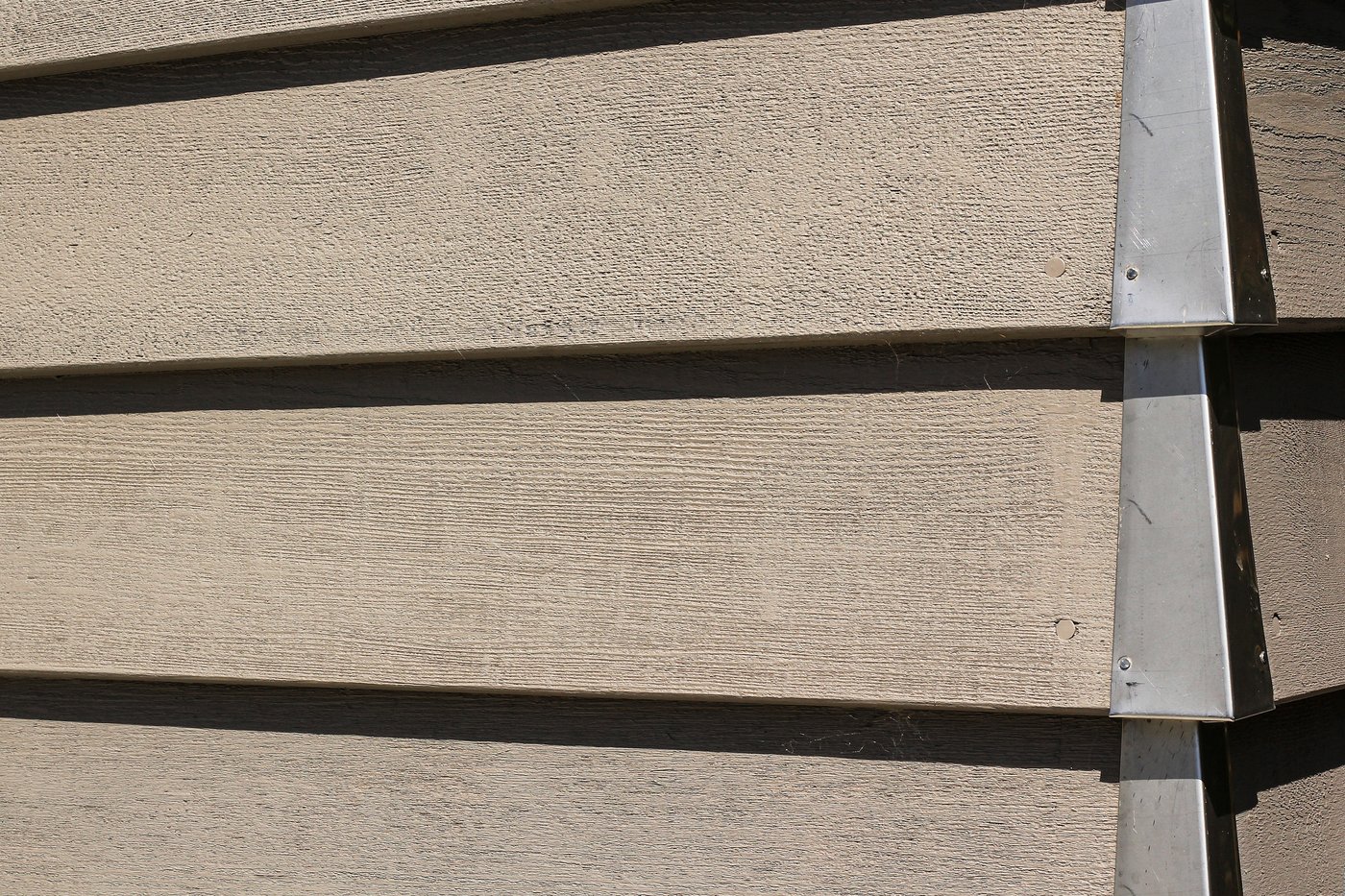
As the Cedar was left such a long time, the story of this property can be told in the before and after photos. We don’t usually have such dramatic transformations with most houses we maintain, so it was a real treat to see how beautifully the Cedar tidied up.
Maintenance Timeline
The customer first approached us on the 14th of October, 2020.
- 16th October, 2020 – Initial onsite assessment completed.
- 22nd October, 2020 – Quote sent.
- 26th November, 2020 – Team arrived onsite to start the job.
- 9th December, 2020 – Job completed.
The job took 72 hours in total: 14 hours to wash and strip the timber in preparation for the coating, and 58 hours to apply the stain. The entire job took 9 days from start to finish.
Cedar Maintenance Process
Cedar that has been sheltered from UV rays has a flat, uniform surface that is straightforward to maintain.
Cedar that has been exposed to high amounts of UV will have broken-down stain or oil still on the surface, which often creates a toehold for organic matter to grow.
The two front faces of this Cedar home demonstrate both situations perfectly.

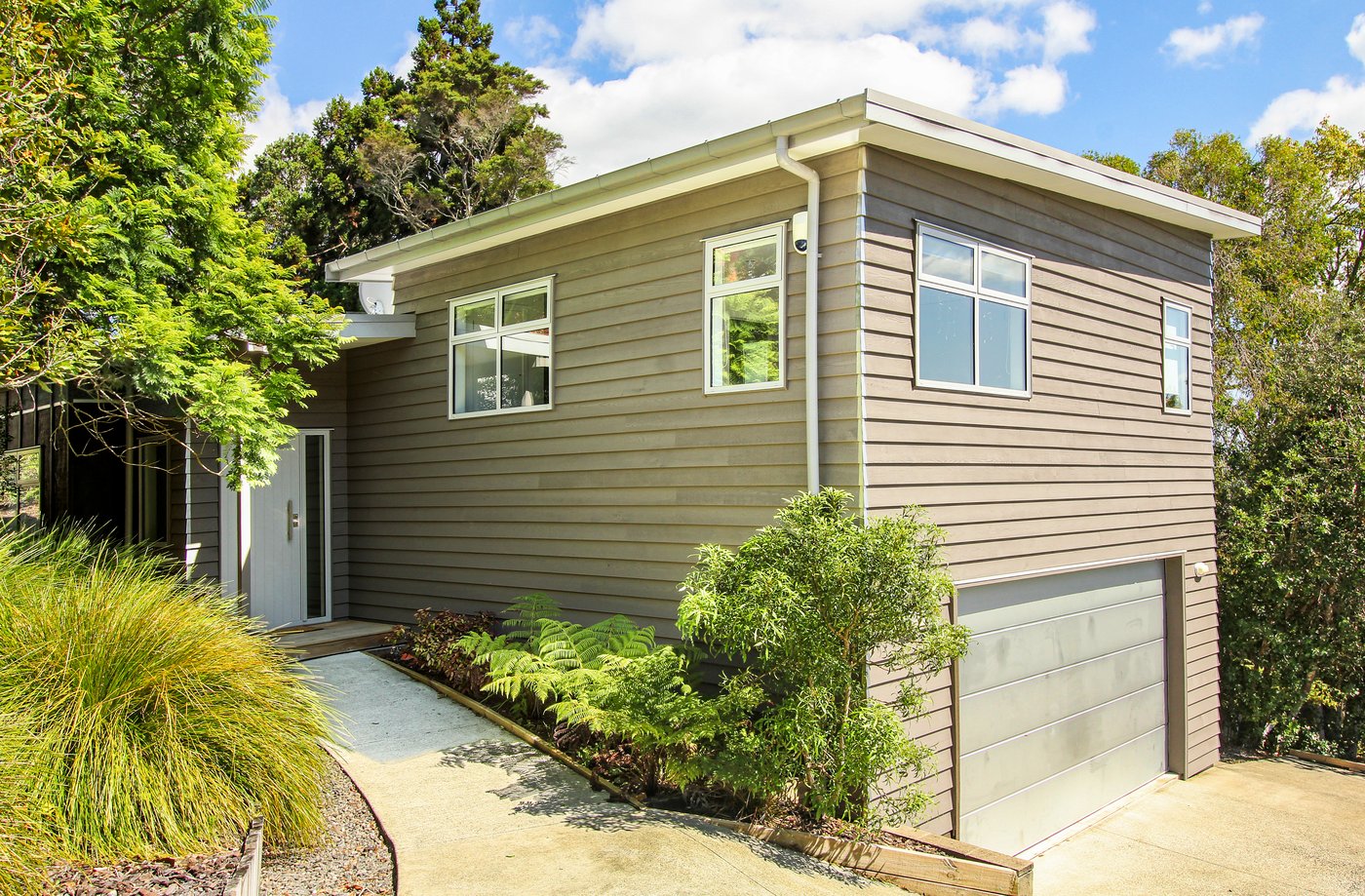
The sheltered face, next to the front door, has a flat even colour; while the exposed face, above the garage door, has been exposed to the UV rays.
The starting point for both faces is the same: the Cedar is washed using a biodegradable cleaning solution to remove organic matter and any remnants of the broken-down stain.
After the deep clean, the sheltered face was ready to be coated.
The exposed face required a more rigorous cleaning process. The orange colour on the Cedar is mould, an organic growth that washes off quite easily during the deep clean.
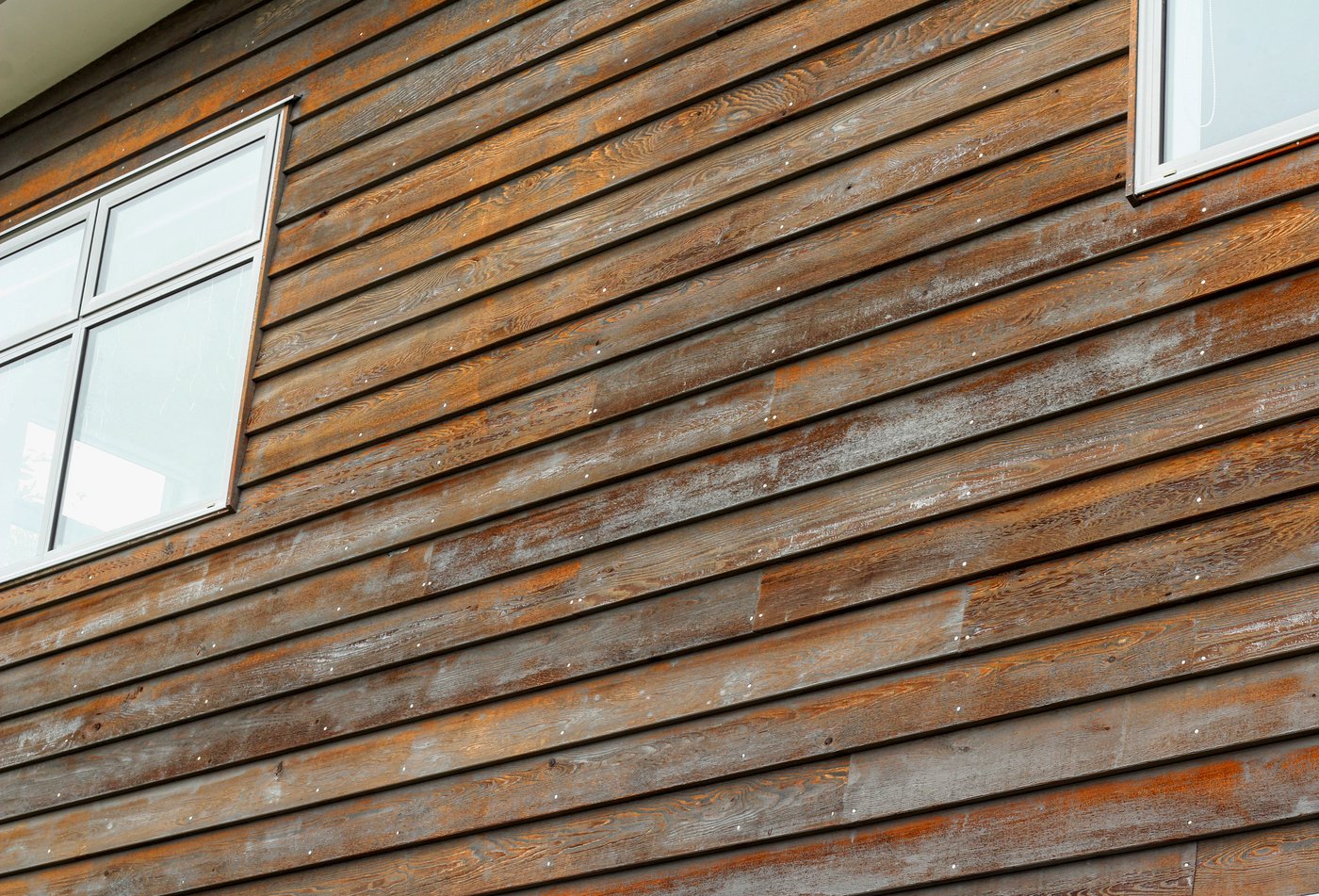

The dark brown sections of timber are stain that hasn’t been broken down by the UV and is still in reasonably good condition. To remove this and get the boards back to a natural state, we had to strip the boards.
The stain used on this property is Resene Woodsman Waterbourne, smokey ash colour. This is a very light-coloured stain, one of the lightest on the market, and it leaves the boards looking natural and warm in tone.
Cedar Maintenance Challenges
Soffits keep moisture away from the roof and help prevent wood rot and mould, but they also shelter the Cedar from UV rays. This sounds good in theory, but often makes the Cedar under the soffits darker than the Cedar exposed to the light.
If these areas are not prepared properly, the finished result will look odd as both stain and oil are translucent and will show whatever is on the surface below. Preparation here is key, and it takes experience and expertise to make sure the surface is even before applying the treatment.

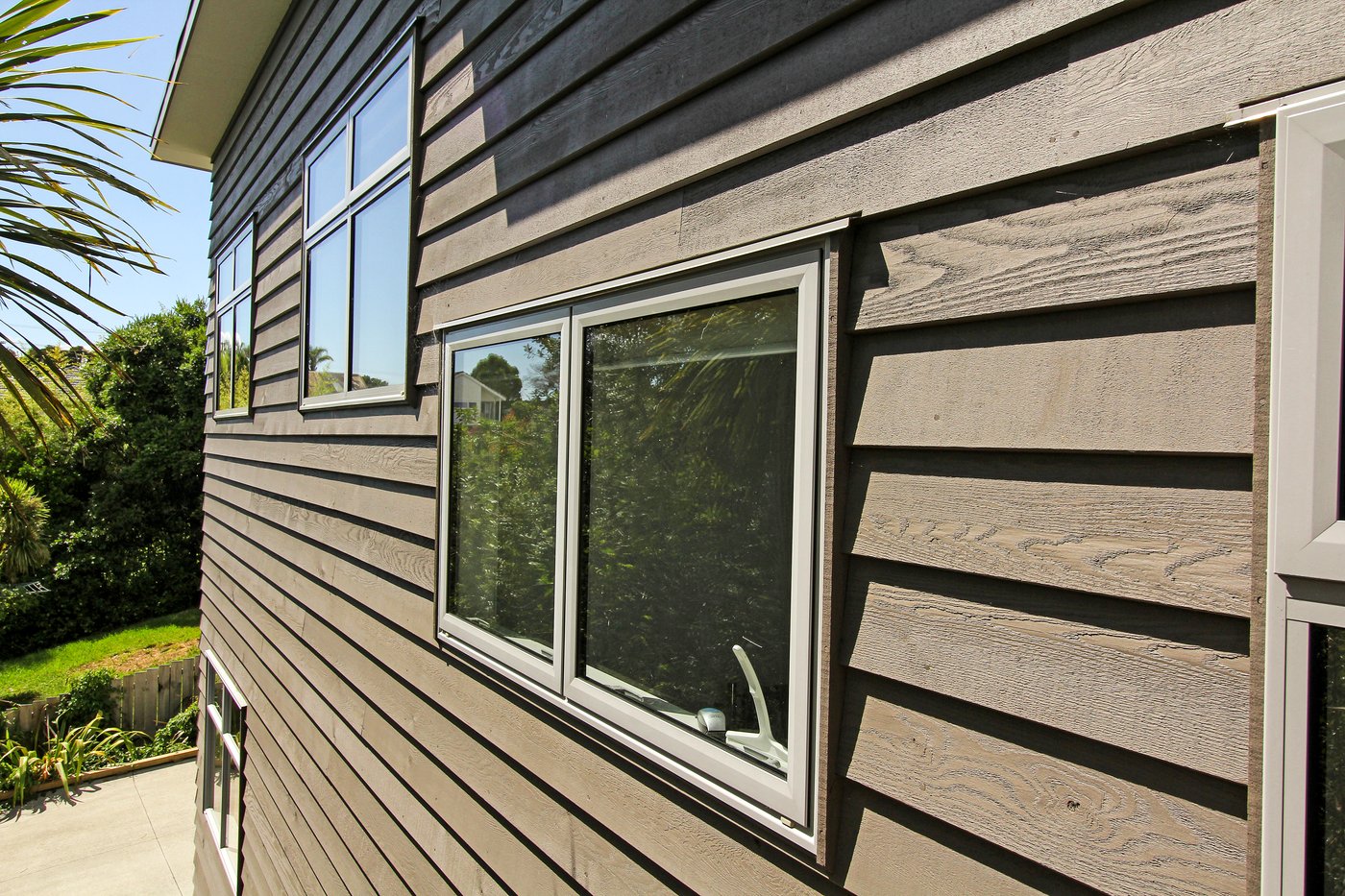
This property also had two high faces over 4 meters that required scaffolding. As the ground below is flat, we were able to use our mobile scaffolding which kept access costs down.
Ongoing Maintenance Requirements
Now that the whole house has been restored, it’s only the sun-exposed faces that will need maintaining every 2-3 summers. The rest of the house may not need further maintenance for 5-7 years.
The Final Outcome
Location matters with Cedar. In an area with lots of tree cover and rain, the boards are often in good condition, but covered in lichen, moss and all sorts of organic material, and they are more susceptible to moisture damage.
That’s nothing out of the ordinary, but it does require some extra work if the Cedar is not regularly maintained.
The new homeowners were delighted with the result. Their newly purchased home cleaned up even more stunning than they imagined, especially the front facing areas that people first see when arriving.
This property is an excellent demonstration of how resilient Cedar really is. An amazing timber that will look great for years to come, with a little love and care.




